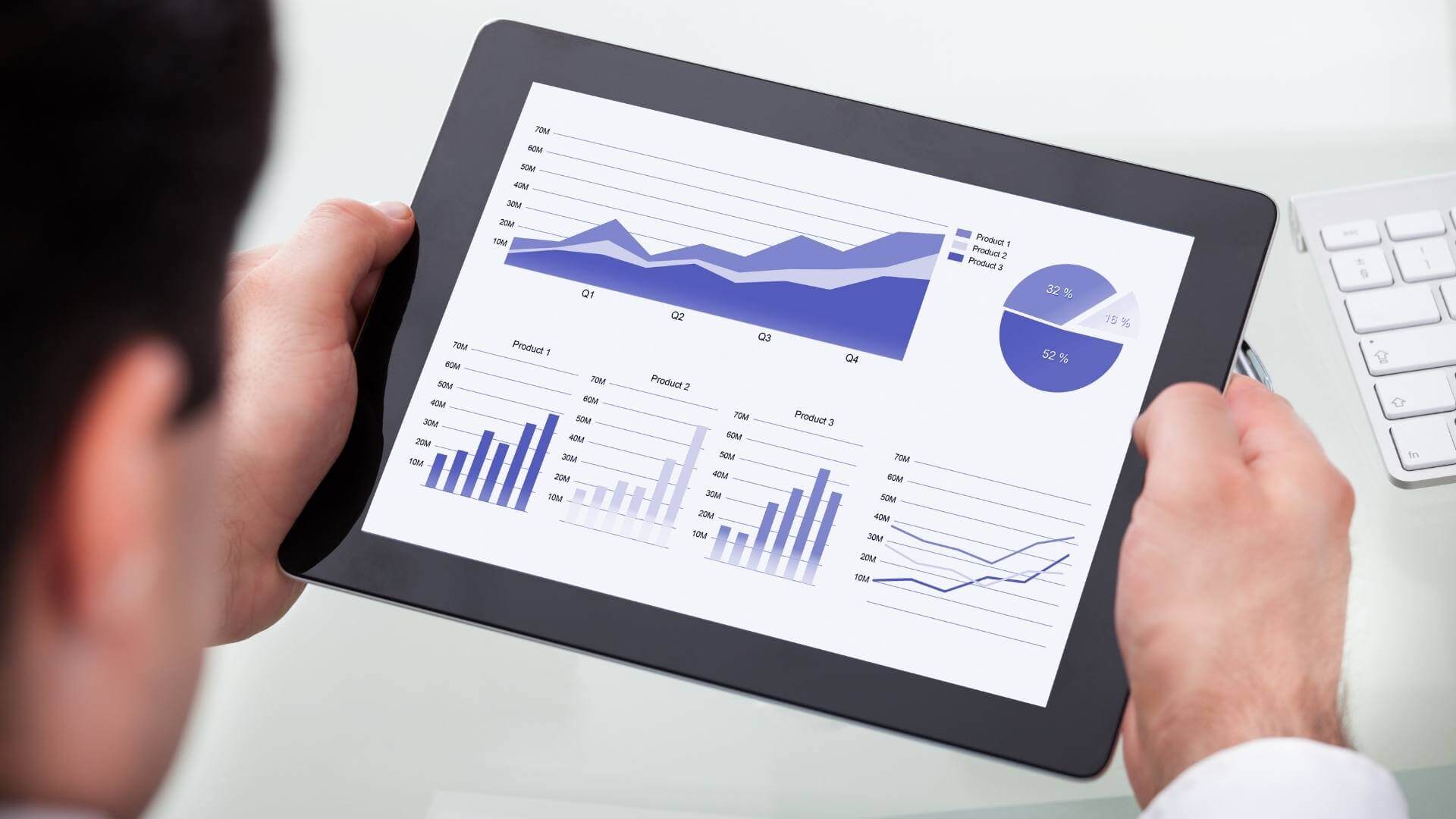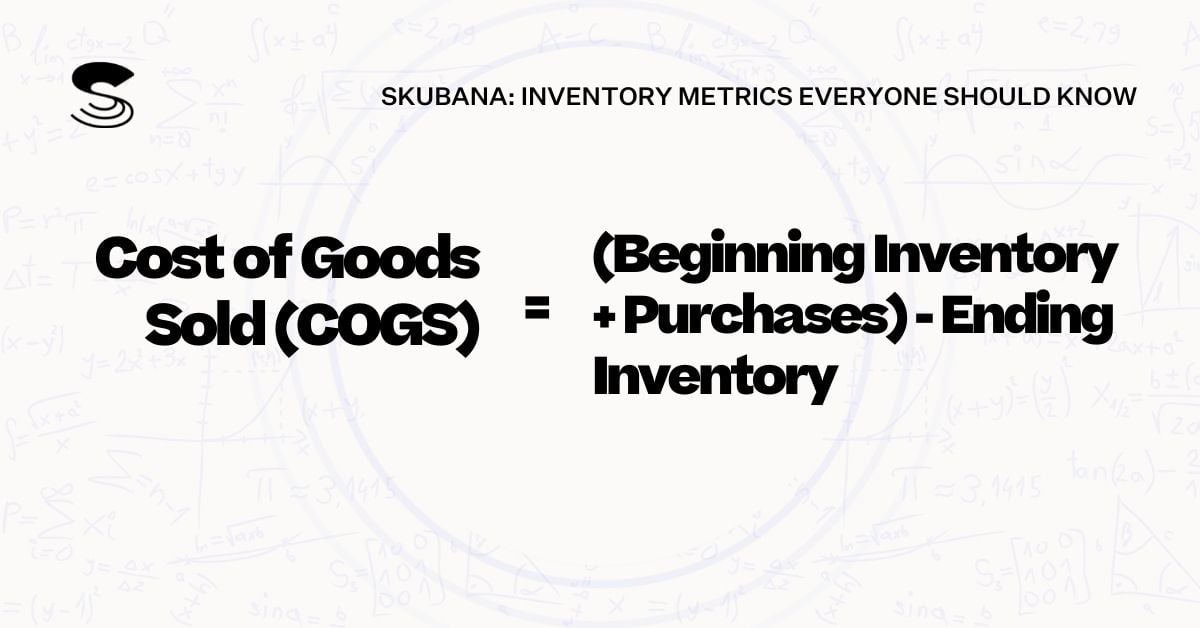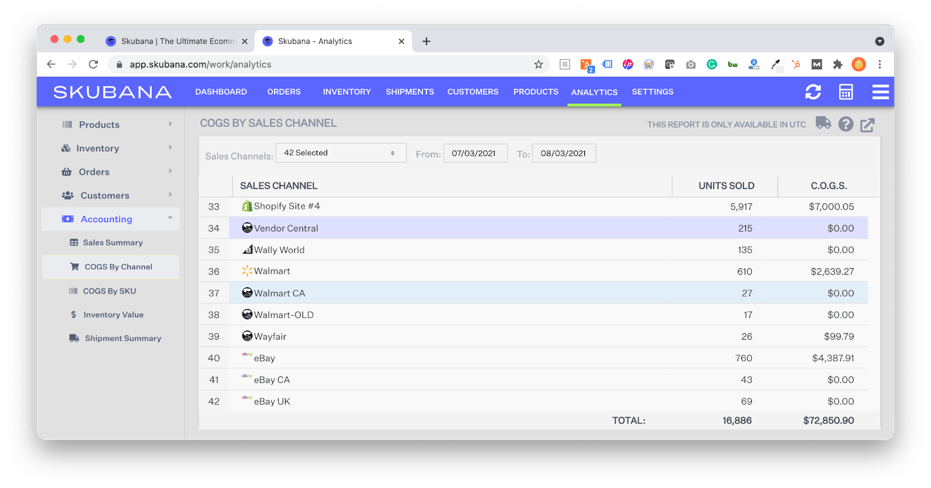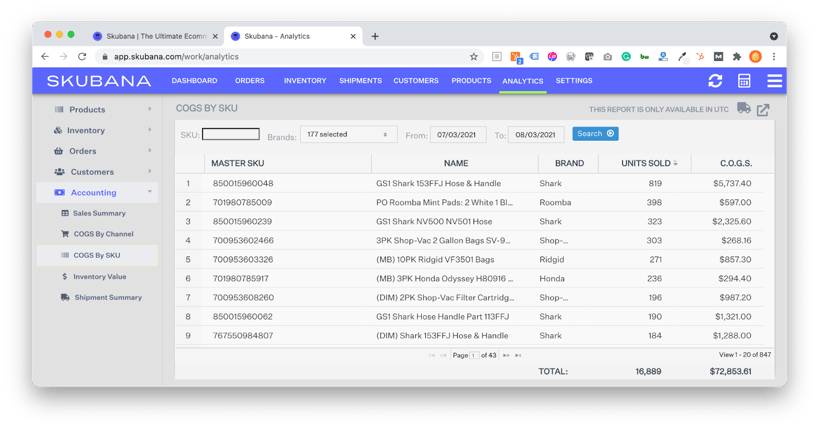Cost of goods sold (sometimes referred to as ‘cost of sales’) is a valuable metric for all ecommerce brands. With an understanding of COGS, your company can gauge how well it’s managing its supplies, workforce, and manufacturing processes, and then hopefully adjust as needed to maximize profitability. On top of that, automating your COGS calculations can save you valuable time and money, and minimize mistakes within your inventory management.
What is cost of goods sold (COGS)?
Cost of goods sold (COGS) is a term for the direct costs of producing the goods sold by a brand or business. The COGS amount includes expenses directly related to production (like raw materials and cost of labor), but it excludes indirect expenses (like overhead and marketing). A company’s cost of goods sold is deducted from its revenue in order to calculate gross profit and gross profit margin; in general, a higher COGS is associated with lower profit margins. 
Inventory methods that affect COGS
When it’s time for product-based businesses to create a record of their inventory, most use one of three accounting methods: (1) FIFO, (2) LIFO, or (3) weighted average. Each method has a different way of calculating both the inventory of goods and the cost of goods sold; depending on your situation, any of these systems may be appropriate to use at one time or another.
FIFO
FIFO (First-in, First-out) is an inventory valuation method where the assets that are acquired first are sold, used, or disposed of first — making this the most preferred way to keep inventory levels fresh. With regards to tax purposes, the FIFO approach assumes assets with the oldest costs are included in the income statement’s cost of goods sold. The remaining assets, then, are matched with goods that have been most recently purchased or produced.
LIFO
A LIFO (Last-in, First-out) strategy assumes the last unit to arrive (i.e. newer inventory) has priority. Using this method, companies take the items that were received last and sell or ship those first. While LIFO can help prevent products from going bad, unfortunately, it is not a good indicator of ending inventory value (because it understates inventory valuation). Typically, LIFO culminates in a higher COGS, lower profits, and less tax liability with inflation. This is why Extensiv only allows for FIFO.
Weighted average
Weighted average is often used to assign the average cost of production to a given product. This method is commonly utilized when inventory items are so intertwined you’re unable to assign a specific cost to an individual unit (like with products that are identical to one another). When you calculate the weighted average cost per unit, this figure can then be used to assign a cost to your ending inventory as well as the cost of goods sold.
Calculate COGS to improve profitability

COGS is an important metric on your financial statements, as it can reveal how effective your company is in managing its labor and supplies within the production process. Understanding your COGS can offer insights into improving your profitability, and help your company adapt its pricing, determine net profit, and optimize both direct and indirect costs.
Adapt your pricing
Because COGS encompasses many factors, it can shed a lot of light on your pricing strategies. If the cost increases over several months’ time, it’s likely you’ll want to adjust your pricing to align with these changes (and to ensure your profit margins stay within a healthy range).
Determine net profit
Since COGS is a cost of doing business, it’s recorded as a business expense on your net income statements. Knowing your unique cost of goods sold helps investors and managers estimate your bottom line in a more efficient manner. If COGS increases, net profit will decrease, which is why you should try to maintain a lower COGS (so net profits will be higher).
Optimize direct and indirect costs
As mentioned above, COGS includes direct expenses but excludes indirect costs. And yet, paying attention to your company’s cost of goods sold can help you optimize both of these amounts; you’ll have greater visibility into your cashflow, to then make better decisions in terms of supply chain management (or even revise where you’re investing your revenue).
How to calculate cost of goods sold?

Calculating your cost of goods sold is fairly straightforward. While there’s a cost of goods sold formula you can follow to perform manual calculations on your own, you also have the option of using an online calculator to save you a bit of time by crunching those numbers for you.
COGS formula
The COGS formula is as follows: COGS = [beginning inventory + purchases during period] – ending inventory. Here, the beginning inventory is the amount of inventory remaining from the previous period (i.e. month, quarter, and so on). As its name suggests, purchases during the period points to the cost of what you purchased during the designated accounting period. Lastly, ending inventory is whatever didn’t sell during that same time period.
Manual calculation
Let’s look at an example of a manual COGS calculation. Say you’re a clothing retailer, and your end of the year accounting reflects the following: beginning inventory ($100,000); new purchases ($400,000); ending inventory ($50,000). With this template, your COGS is [100,000 + 400,000] – 50,000 = $450,000. This information will support you in making a purchasing plan for the next year, and help you evaluate total costs and/or update pricing as needed.
Automated calculation
If you’d prefer not to run those calculations on your own, you can opt for an automated COGS calculation instead. There are certain online calculators available to help you with this process, though they will still require you to plug in your beginning inventory, ending inventory, and purchases made during that specified period. Automated systems can really improve accuracy, and can take some of the work off your plate to expend elsewhere within your business.
How to use the COGS calculator
Of the two options for calculating your company’s COGS, using an online calculator is arguably the preferred method for most ecommerce retailers. Extensiv Order Manager’s cost of goods sold calculator has all the efficiency and ease you could hope for, while delivering precise results at the same time. With the aid of Extensiv Order Manager’s calculator, you can simply input your pre-determined beginning and ending inventory, plus whatever you spent on purchases during that window of time.
Then, within just a click or two, you’ll have the COGS answers you’ve been looking for, and be able to make more focused, comprehensive decisions that lead to sustainable growth.
Automate your COGS calculation with Extensiv Order Manager
Like it or not, inventory costs are subject to change based on certain external factors — insurance, delays, handling, and so on. However, choosing to automate this process can save you time and minimize mistakes. By partnering with Extensiv Order Management, your company can automate its COGS calculations so everything is more streamlined and reliable (especially for brands with complex or wide-reaching inventory networks).
Automate COGS calculation based on inventory method
Even people who excel at crunching numbers are still open to making mistakes from time to time. But with Extensiv Order Management, you can establish automated COGS calculations based on your preferred inventory method. These advanced automations take the guesswork out of the COGS model, by mobilizing real-time data to deliver trusted outcomes. Automating COGS calculations is the best way to reduce human error and improve decision-making at every stage.
Track your COGS by channel and by SKU
If you’re a multichannel merchant, Extensiv makes it simple to track your COGS by each channel. Thanks to Extensiv Order Manager’s Reports feature, you can dive into detailed operations analytics, so you can see where you’re making money, losing money, and which SKUs you should prioritize. Through product analytics, inventory analytics, accounting analytics, and more, you can gain greater inventory control and enhance your approach to inventory management.

In the next image you can see COGs by SKU. you can search by a SKU number or select one or more brands.

Make decisions based on past data trends
Extensiv Order Manager also supports businesses in making forecasting, purchasing, or supply chain decisions based on their previous data trends. Using this historical data, retailers can readily adapt their pricing models or optimize their costs, thanks to Extensiv Order Manager’s automatic updates on sales velocity, reorder quantities, and forecasted reorder dates. Making sharper decisions ultimately leads to increased sales and an elevated customer experience (a real win-win).






